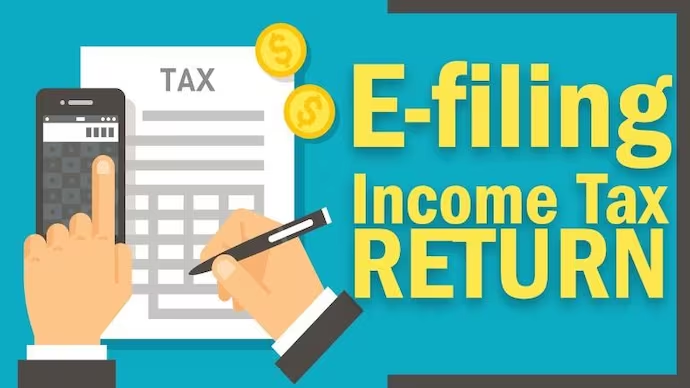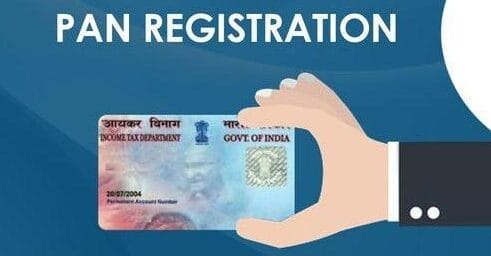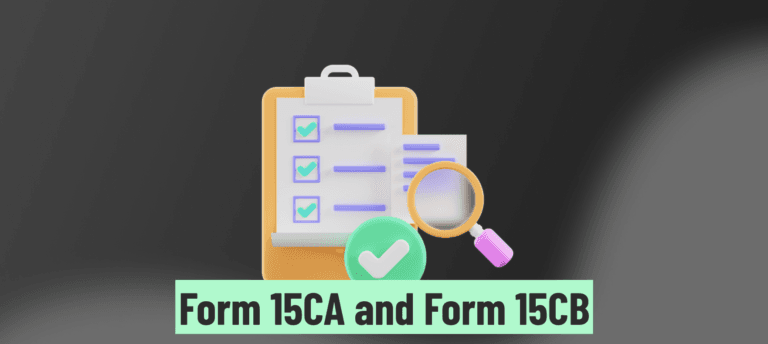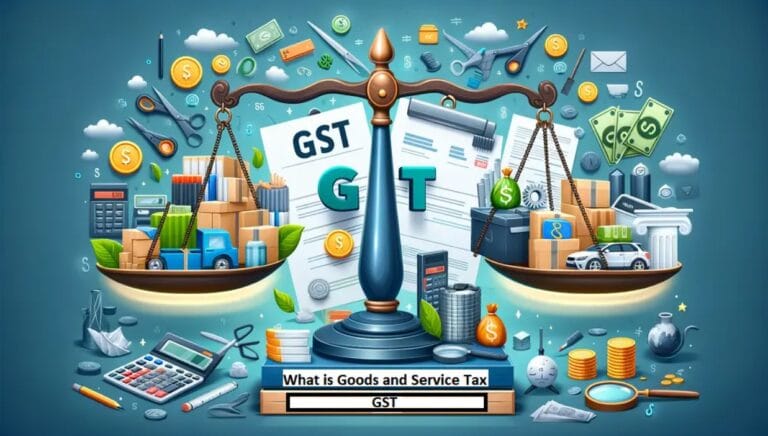Income tax in India is a direct tax levied on the income of individuals, corporations, and other entities by the Government of India. It is governed by the Income Tax Act, 1961, which outlines the various provisions related to the computation, assessment, collection, and administration of income tax. Here’s a comprehensive overview of income tax in India:
Categories of Taxpayers
1. Individuals
An individual is a natural person who is a citizen of India or a resident of India. Under the Income Tax Act, an individual is taxed on his or her income. The income tax rates for individuals vary depending on their income level.
- Residents: Taxed on their global income.
- Non-residents: Taxed only on income earned or accrued in India.
2. Hindu Undivided Families (HUFs)
An HUF is a type of family arrangement that is recognized under Hindu law. An HUF consists of all persons lineally descended from a common ancestor, including their wives and unmarried daughters. Under the Income Tax Act, an HUF is taxed as a separate entity from its members.
- Joint family taxation under Hindu law.
3. Corporates
A company is a separate legal entity that is registered under the Companies Act, 2013. Companies are taxed on their income at a flat rate.
- Domestic companies.
- Foreign companies with income earned in India.
4. Partnership Firms and LLPs
A firm is an association of two or more individuals who come together to carry on a business. Under the Income Tax Act, a firm is taxed as a separate entity from its partners.
- Including limited liability partnerships.
Heads of Income
Income is classified under five main heads for taxation purposes:
- Income from Salary:
- Wages, pensions, annuities, and other employment-related income.
- Income from House Property:
- Rental income from owned properties.
- Profits and Gains of Business or Profession:
- Income from business operations or professional services.
- Income from Capital Gains:
- Profits from the sale of capital assets like property, stocks, bonds, etc.
- Income from Other Sources:
- Interest, dividends, winnings from lotteries, gifts, etc.
Income Tax Slabs and Rates
Income tax rates vary based on the income level and the category of the taxpayer. For individual taxpayers below 60 years of age, the tax slabs for the financial year 2024-25 are:
New Tax Regime (Optional):
- Income up to ₹3,00,000: Nil
- ₹3,00,001 to ₹7,00,000: 5%
- ₹7,00,001 to ₹10,00,000: 10%
- ₹10,00,001 to ₹12,00,000: 15%
- ₹12,00,001 to ₹15,00,000: 20%
- Above ₹15,00,000: 30%
Old Tax Regime:
- Income up to ₹2,50,000: Nil
- ₹2,50,001 to ₹5,00,000: 5%
- ₹5,00,001 to ₹10,00,000: 20%
- Above ₹10,00,000: 30%
*Note: Senior citizens (60-80 years) and super senior citizens (above 80 years) have higher exemption limits under the old tax regime.
Tax Slabs for Domestic Company
Condition | Income Tax Rate (excluding surcharge and cess) |
Total Turnover or Gross Receipts during the previous year 2020-21 does not exceed ₹ 400 crores | 25% |
If opted for Section 115BA | 25% |
If opted for Section 115BAA | 22% |
If opted for Section 115BAB | 15% |
Any other Domestic Company | 30% |
Tax Slabs for Foreign Company
Condition | Income Tax Rate |
Royalty from Government or an Indian concern in pursuance of an agreement made with the Indian concern after 31st March 1961, but before 1st April 1976, or fees for rendering technical services in pursuance of an agreement made after 29th February 1964 but before 1st April 1976 and where such agreement has, in either case, been approved by the Central Government | 50% |
Any other income | 40% |
Tax Rates for AOP, BOI and Artificial Juridical Person
|
Old Tax Regime |
New Tax Regime u/s 115BAC |
||
|
Income Tax Slab |
Income Tax Rate |
Income Tax Slab |
Income Tax Rate |
|
Up to ₹ 2,50,000 |
Nil |
Up to ₹ 3,00,000 |
Nil |
|
₹ 2,50,001 – ₹ 5,00,000 |
5% above ₹ 2,50,000 |
₹ 3,00,001 – ₹ 6,00,000 |
5% above ₹ 3,00,000 |
|
₹ 5,00,001 – ₹ 10,00,000 |
₹ 12,500 + 20% above ₹ 5,00,000 |
₹ 6,00,001 – ₹ 9,00,000 |
₹ 15,000 + 10% above ₹ 6,00,000 |
|
Above ₹ 10,00,000 |
₹ 1,12,500 + 30% above ₹ 10,00,000 |
₹ 9,00,001 – ₹ 12,00,000 |
₹ 45,000 + 15% above ₹ 9,00,000 |
|
₹ 12,00,001 – ₹ 15,00,000 |
₹ 90,000 + 20% above ₹ 12,00,000 |
||
|
Above ₹ 15,00,000 |
₹ 1,50,000 + 30% above ₹ 15,00,000 |
||
Tax Slabs for Partnership Firm / LLP
For the AY 2024-25, a Partnership Firm (including LLP) is taxable at 30%.
Tax Slabs for Local Authority
For the AY 2024-25, a Local Authority is taxable at 30%.
Filing of Income Tax Returns (ITR)
1. Due Dates
- Individuals and HUFs: July 31 of the assessment year.
- Companies and firms requiring audit: September 30 of the assessment year.
2. Forms
- ITR-1: For individuals with salary income, one house property, and other sources.
- ITR-2: For individuals and HUFs not having income from business/profession.
- ITR-3: For individuals/HUFs having income from business/profession.
- ITR-4: For presumptive income from business/profession.
- ITR-5, ITR-6, ITR-7: For firms, companies, and other entities.
3. E-filing
- Online submission of ITR through the Income Tax Department’s e-filing portal.
Tax Collection Mechanisms
- Tax Deducted at Source (TDS):
- Deduction of tax at the source of income.
- Tax Collected at Source (TCS):
- Collection of tax by the seller from the buyer on specified transactions.
- Advance Tax:
- Periodic payment of estimated tax liability during the financial year.
- Self-Assessment Tax:
- Payment of the remaining tax liability before filing the ITR.
Assessments and Appeals
- Scrutiny Assessments:
- Detailed examination of ITRs by the tax authorities.
- Reassessments:
- Re-opening of assessments based on new information.
- Appeals:
- Taxpayers can appeal against assessment orders to the Commissioner of Income Tax (Appeals), the Income Tax Appellate Tribunal (ITAT), and higher judicial authorities.
Penalties and Prosecutions
- Penalties:
- For non-filing or late filing of ITR, under-reporting of income, and non-compliance with tax provisions.
- Prosecutions:
- Severe cases of tax evasion can lead to prosecution and imprisonment.
Income tax in India is a comprehensive system aimed at collecting revenue for the government while ensuring compliance and fairness in taxation. With various provisions for deductions, exemptions, and different tax rates, taxpayers can optimize their tax liabilities. Understanding the nuances of income tax laws and staying compliant is crucial for individuals and businesses to avoid penalties and ensure smooth financial management.
At Ujjwal Gupta & Co
We, at Ujjwal Gupta & Co, are dedicated to delivering personalized, high-quality solutions tailored to meet your financial and business needs. With our team of professionals and a client-first approach, we ensure that every challenge is met with expert guidance and strategic insight.
We are dedicated to ensuring your business’s success by providing best service practice available in the industry and that too at a cost effective pricing. Our team of experts is excited to work with you and provide the support you need to thrive in the Indian business landscape.
Our only motive is to create Value for Our Clients and accordingly, have a Client Value System at our Office.
So, let us help you navigate the complexities of finance and compliance, empowering you to focus on what matters most — growing your business. Get in touch today, and take the first step towards financial peace of mind.
Income Tax is a direct tax levied by the government on the income earned by individuals, businesses, and other entities within a financial year. It is collected by the Income Tax Department under the provisions of the Income Tax Act, 1961.
The following entities are required to pay income tax in India:
- Individuals with an annual income exceeding the basic exemption limit (₹2.5 lakh for individuals below 60 years, ₹3 lakh for those between 60-80 years, and ₹5 lakh for those above 80 years).
- Hindu Undivided Families (HUFs)
- Partnership Firms and LLPs
- Companies
- Trusts and other artificial entities
There are two tax regimes: the old regime (with deductions) and the new regime (without deductions). For individuals under 60 years, the new regime tax slabs are:
- Up to ₹2.5 lakh: Nil
- ₹2.5 lakh to ₹5 lakh: 5%
- ₹5 lakh to ₹10 lakh: 20%
- Above ₹10 lakh: 30%
Under the old regime, deductions under Section 80C and others can be claimed, but the tax rates may vary.
- The old regime allows taxpayers to claim various deductions (e.g., under Section 80C, 80D) and exemptions (e.g., HRA, LTA), but at slightly higher tax rates.
- The new regime offers lower tax rates but does not allow deductions or exemptions. Taxpayers can choose between the two regimes based on their income and expenses.
You can file your ITR through:
- Online on the Income Tax e-filing portal (https://www.incometax.gov.in). This allows individuals to file ITRs directly using their PAN and Aadhaar.
- Using a Chartered Accountant (CA) or tax consultant.
- Using government-approved e-filing intermediaries. Filing is mandatory for those earning above the exemption limit.
There are several ITR forms depending on the taxpayer’s income source:
- ITR-1 (Sahaj): For individuals with income from salary, one house property, and other sources.
- ITR-2: For individuals and HUFs with income from more than one house property, capital gains, or foreign income.
- ITR-3: For individuals and HUFs with income from business or profession.
- ITR-4 (Sugam): For those opting for the presumptive income scheme.
- ITR-5, ITR-6, ITR-7: For partnership firms, companies, and other entities.
TDS is a system where the payer of specific types of income (such as salary, interest, rent, or commission) deducts a portion of tax at the time of payment. The deducted tax is deposited with the government, and the recipient can claim this amount as a credit when filing their ITR.
Common deductions include:
- Section 80C: Up to ₹1.5 lakh for investments in PPF, EPF, LIC, ELSS, NSC, and more.
- Section 80D: Deduction for medical insurance premiums paid.
- Section 80TTA: Deduction for interest on savings accounts (up to ₹10,000).
- Section 24(b): Deduction on home loan interest (up to ₹2 lakh).
- Section 80E: Deduction for interest on education loans.
Advance Tax is the tax that must be paid in installments if your total tax liability is ₹10,000 or more after considering TDS. It is applicable to both individuals and companies. Advance tax must be paid according to the following schedule:
- 15% by June 15
- 45% by September 15
- 75% by December 15
- 100% by March 15
If you file your ITR after the due date but before December 31, a penalty of ₹5,000 may apply. After December 31, the penalty increases to ₹10,000. However, if your total income is below ₹5 lakh, the maximum penalty is capped at ₹1,000. Additionally, interest under Section 234A, 234B, and 234C may apply for late payment or non-payment of tax.
Why Choose UGC?

Client Centric Approach
Client is the key driver of our service offerings. Our approach to service offerings is based on a client centric and customized approach. Our specialized teams are a mix of technical and industry experience in order to serve clientele for their specific needs.

Team Work
We have built high performing teams supported by strong work ethic. Our team is a mix of experts, professionals and support staff from technical and varied academic, social and ethnic backgrounds. We believe diversification plays a vital role in motivating the team.

Quick Turnaround
We always endeavour for a quick turnaround time to serve our clientele. We are supported by an experienced and client focussed support teams to offer timely services to our clientele. In case of any business exigencies and time sensitive service requirements, you can always count on us.

Open Communications
We believe that open communication is the core principle in order to demonstrate trust, build long lasting and valuable relationships with clientele. We are committed to ensuring transparency in communication, service offerings and delivery. We provide professional services to our clients.

Client Value System
We value for the Client time and thus, we offer services that are value for money. Quality professional services are provided to our clients, so that they are able to achieve their desired results. We are a quality trademark in the industry and thus, our clients count on us always.

Quality in Delivering Work
Our service offerings are driven by quality and reviews at every level. We strive to provide a qualitative and value-added delivery to our clientele. At all times, we endeavour to provide exceptional client service by meeting client expectations and driving client satisfaction.














